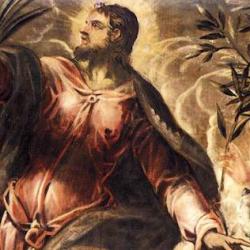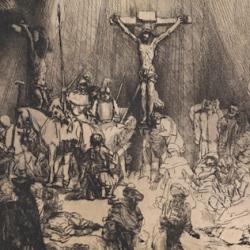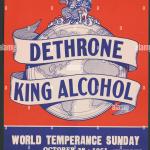Robert Kolb (Martin Luther: Confessor of the Faith) observes that Luther resisted presenting a systematic theology of atonement. Instead, he employed various biblical images and descriptions to meet the pastoral needs of his audience: “When he addressed the guilt or shame of his hearers, Luther presented Christ’s substitutionary sacrifice, which took away the penalty of death which the law lays upon sinners, through a variety of descriptions. When he addressed their fears and terrors, he emphasized Christ’s power and presence in their situations through his mighty deliverance in his resurrection” (123).
According to Kolb, Luther’s emphasis on the “joyous exchange” between Christ and the sinner demonstrates that “Luther taught substitutionary or vicarious satisfaction.” Not without qualification and elaboration: For Luther, “the term ‘satisfaction’ is ‘too weak to fully express Christ’s grace and does not adequately honor his suffering.’ The law evaluates sinners as guilty and condemns them to death. Only execution satisfies the law’s demand that sinners die. Thus, sinners are so closely drawn into Christ’s crucifixion that they die with him” (121).
Luther was also fond of using the Aulenesque image of the “magnificent duel”: “From 1517 on, he presented Christ’s work as a battle won against the believer’s foes. Luther told his students in 1531, Christ’s ‘victory is a victory over the Law, sin, our flesh, the world, the devil, death, hell, and all evils; and this victory of his he has given to us. Even though these tyrants, our enemies, accuse us and terrify us, they cannot drive us into despair or condemn us. For Christ, whom God the Father raised from the dead, is Victor over them, and he is our righteousness.’” He reiterated the theme in his Large Catechism: “Before this I had no lord or king but was captive under the power of the devil. I was condemned to death and entangled in sin and blindness. . . . we lay under God’s wrath and displeasure, sentenced to eternal damnation, as we had merited it and deserved it. There was no source of help, no comfort for us until the only, eternal Son of God, in his unfathomable goodness, had mercy on us. . . . Those tyrants and jailers have now been routed, and their place has been taken by Jesus Christ . . . He has snatched us, poor lost creatures, from the jaws of hell, won us, made us free, and restored us to the Father’s favor and grace’” (121-2).
The liberation is also a liberation from the law: “Paul presented the law as a captive, ‘bound hand and foot, shorn of all power, so that it cannot exert its tyranny, that is, accuse and condemn’. When oppressed by guilt and fear of judgment, God’s people have ‘the courage to insult the law with a certain holy pride and to say: “I am a sinner. If you can do anything against me, Law, go ahead and do it!” That is how far the law now is from frightening the believer.’” As Luther said: “Only Christ takes away the law, kills my sin, destroys my death in his body, and in this way empties hell, judges the devil, crucifies him, and throws him down into hell. In other words, everything that once used to torment and oppress me Christ has set aside; he has disarmed it and made a public example of it triumphing over it in himself” (122).















